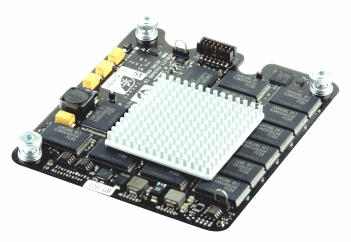About damn time! I read earlier in the year on their forums that they were planning on ESX support for their next release of code, originally expected sometime in March/April or something. But that time came and went and saw no new updates.
I saw that Fusion IO put on a pretty impressive VDI demonstration at VMworld, so I figured they must have VMware support now, and of course they do.
I would be very interested to see how performance could be boosted and VM density incerased by leveraging local Fusion IO storage for swap in ESX. I know of a few 3PAR customers that say they get double the VM density per host vs other storage because of the better I/O they get from 3PAR, though of course Fusion IO is quite a bit snappier.
With VMware’s ability to set swap file locations on a per-host basis, it’s pretty easy to configure, in order to take advantage of it though you’d have to disable memory ballooning in the guests I think in order to force the host to swap. I don’t think I would go so far as to try to put individual swap partitions on the local fusion IO for the guests to swap to directly, at least not when I’m using a shared storage system.
I just checked again, and as far as I can tell, still, from a blade perspective at least, still the only player offering Fusion IO modues for their blades is the HP c Class in the form of their IO Accelerator. With up to two expansion slots on the half width, and three on the full width blades, there’s plenty of room for the 80, 160 GB SLC models or the 320GB MLC model. And if you were really crazy I guess you could use the “standard” Fusion IO cards with the blades by using the PCI Express expansion module, though that seems more geared towards video cards as upcomming VDI technologies leverage hardware GPU acceleration.
 HP’s Fusion IO-based I/O Accelerator
HP’s Fusion IO-based I/O Accelerator
FusionIO claims to be able to write 5TB per day for 24 years, even if you cut that to 2TB per day for 5 years, it’s quite an amazing claim.
From what I have seen (can’t speak with personal experience just yet), the biggest advantage Fusion IO has over more traditional SSDs is write performance, of course to get optimal write performance on the system you do need to sacrifice space.
Unlike drive form factor devices, the ioDrive can be tuned to achieve a higher steady-state write performance than what it is shipped with from the factory.
If the capacity is 50% full or more, performance is very different.
Comment by Greg C — May 17, 2011 @ 8:13 am
The performance drop-off you speak of doesn’t affect the Fusion-io cards; their technology doesn’t suffer from the “cliff” phenomenon like tradittional SSD’s do. That’s why they are enterprise grade and not many others can claim that.
Comment by GK — June 20, 2011 @ 9:40 am